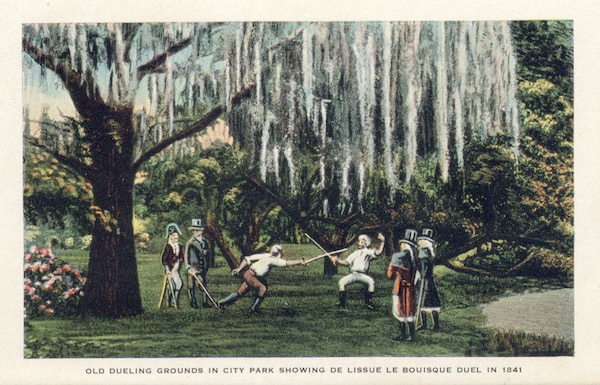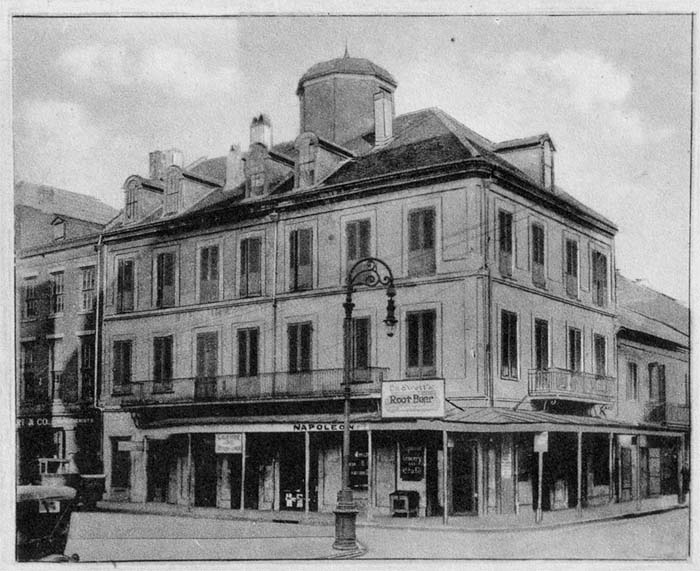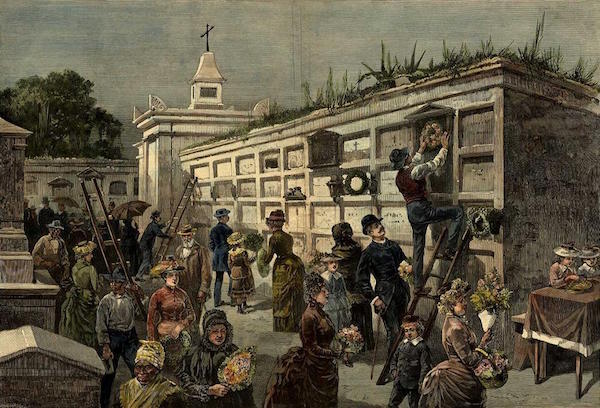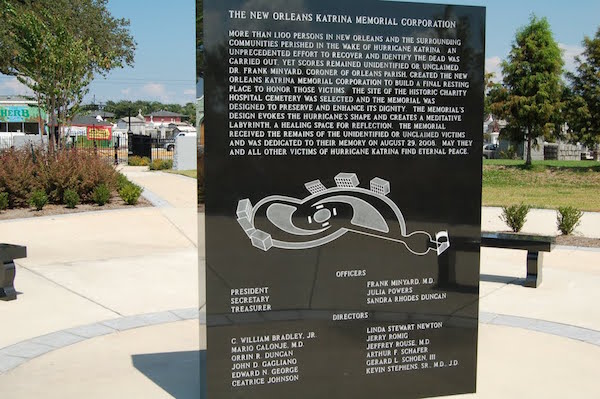New Orleans is a place of myth and mysticism. It’s a city of rich, bon temps rouler party culture with a dark undercurrent of cynicism and violence. It’s the most haunted city in America (or so the tourism bureau would have you believe) and one of the most haunting cities for those who fall under its spell.
I am one of those people.
So I had a lot to consider in choosing my five most magical spots in my adopted hometown…
The most supposedly haunted? I’d need to include Lafitte’s Blacksmith Shop, a legitimate business behind which my favorite pirate hid some of his illegitimate activities. Or the Hotel Monteleone (where the undead Jean Lafitte lives in my Sentinels of New Orleans series). Or just about any building in the French Quarter.
I could also go for the most infamous spots—scenes of horrific violence and mayhem. Or perhaps romantically magical spots like the streetcars rumbling down St. Charles Avenue or the trill of jazz along the riverfront. Maybe I could go with the scariest spots—surely led by the rusting ruins and clowns of Six Flags still abandoned a decade after Hurricane Katrina.
But New Orleans is a city where history is tangible, and that’s not so common in the United States. With that in mind, here are my five most magical spots in New Orleans, spots where history can still be felt behind the veneer of 21st-century civilization.
THE DUELING and SUICIDE OAKS

Today, New Orleans’ City Park holds more than 250 live oaks, one of the world’s largest stands of these majestic trees. Two particular trees, spreading their broad branches along the ground and high into the sky, wisps of Spanish moss flying in the breeze like the strands from the head of Medusa, have seen their share of New Orleans history.
One is the single remaining of the city’s Dueling Oaks, where hundreds of lives were lost in the 18th and 19th centuries at the hand of duelers’ pistols or, more often, sabers or swords. On one particular Sunday in 1839, ten duels were fought in a 24-hour period.
Not far from the last Dueling Oak is what became known in the 1900s as the Suicide Oak, where more than 16 men committed suicide in one 12-year period in the early 1800s alone. The haunting magic of the Dueling and Suicide Oaks can still be felt on a sweltering late summer afternoon.
THE NAPOLEON HOUSE
 For much of its early history, New Orleans was a predominantly French city, and local citizens were very concerned about the welfare of Emperor Napoleon Bonaparte following his 1814 exile. New Orleans’ then-mayor, Nicholas Girod, offered Napoleon his residence on Chartres Street as a refuge.
For much of its early history, New Orleans was a predominantly French city, and local citizens were very concerned about the welfare of Emperor Napoleon Bonaparte following his 1814 exile. New Orleans’ then-mayor, Nicholas Girod, offered Napoleon his residence on Chartres Street as a refuge.
Napoleon never made it to the Crescent City, but eventually the house was sold and turned into a bar and restaurant that has defiantly refused to change with the times.
Classical music wafts through the rooms, their cracked plaster walls and exposed lathing giving the impression that the place hasn’t much changed since Girod’s time—and certainly not since William Faulkner and Sinclair Lewis, Tennessee Williams and Truman Capote spent time soaking up alcohol and trading stories.
The place reeks of New Orleans history, and serves a damn fine muffaletta as well.
JEAN LAFITTE NATIONAL HISTORICAL PARK AND BARATARIA PRESERVE

To the early 19th-century governor of Louisiana and the businessmen of New Orleans, Jean Lafitte and his thousand privateers and pirates living in the swamps south of the city were a menace. To the local citizens, who bought Lafitte’s black-market goods “procured” from Spanish ships at a hefty discount, he was a dashing French Robin Hood.
It’s hard to stumble more than a few blocks in New Orleans without finding something named after Lafitte, but in the nature preserve down in the swamps where he spent most of his time, little seems changed. Oh, sure, handy wooden walkways lead into the dense swamp, bayou and marshland (complete with “beware of alligator” signs), but it’s easy to think of Lafitte and his men paddling their way toward New Orleans along routes more civilized men feared to cross.
ST. LOUIS CEMETERY NO. 1 and NO. 2

Popular tourist tales insist that New Orleans buries its dead in above ground tombs because the high water table makes the dead prone to float away during floods.
The less-romantic explanation is more practical—above ground, multiple-coffin tombs take up less space in a city hemmed in by water. So in 1789, St. Louis Cemetery No. 1—the official oldest final resting place in New Orleans—was constructed on what is now Basin Street.
Today, visits to St. Louis Cemetery No. 1 (and No. 2, which was begun a couple of decades later) bring back history through the crumbling tombs of such figures as voodoo priestess Marie Laveau (in No. 1) and Jean Lafitte’s chief lieutenant, Capt. Dominique You (in No. 2).
THE HURRICANE KATRINA MEMORIAL

It would be hard to pick out a single location to mark the sites most impacted by Hurricane Katrina and the post-storm levee failures that in 2005 took 1,833 lives, most in South Louisiana and New Orleans. The Lower Ninth Ward, Lakeview, Gentilly, Mid-City… the devastation was both deep and widespread.
But the city did a good job of creating an official, haunting Katrina Memorial near Mid-City. From above, the central stone and surrounding wall form the distinctive shape of a hurricane, and it is here than the 83 unclaimed victims of the flooding were buried—30 still unidentified.
Their graves are visible through the fleur-de-lis cutouts of the monument’s wrought-iron fence, paying testament to all the history the city has endured and the magic of its resilience and rebirth.
 Suzanne Johnson is the author of the Sentinels of New Orleans urban fantasy series from Tor Books. Book five, Belle Chasse, comes out on November 8. She also writes as Susannah Sandlin.
Suzanne Johnson is the author of the Sentinels of New Orleans urban fantasy series from Tor Books. Book five, Belle Chasse, comes out on November 8. She also writes as Susannah Sandlin.









